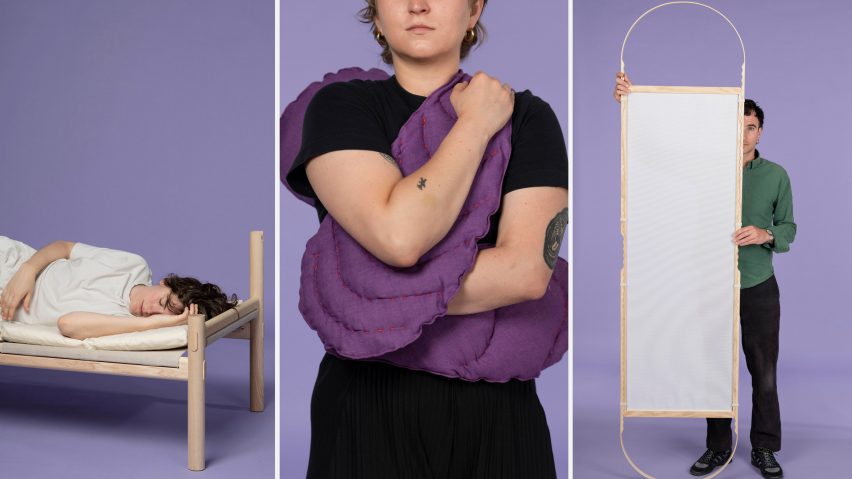
Lucerne School of Art and Design spotlights 15 design projects
Dezeen School Shows: sex toys for older women are included in Dezeen's latest school show by students at Lucerne School of Art and Design.
Also included is a wooden stool designed to help people with physical impairments enter a prayer position and a portable room divider.
Lucerne University of Applied Sciences and Arts
School: Lucerne School of Art and Design
Course: Bachelor Object Design
Tutors: Christoph Schindler, Andreas Saxer, Christof Sigerist, Florian Hauswirth, Thai Hua, Monica Gaspar, Dagmar Steffen, Anniina Koivu, Michael Niederberger, Guy Markowitsch and Bigna Suter
"Object designers design products and thus shape the way we as consumers will perceive, select, use, value and reuse products in the future.
"We regard the heritage of industrialisation as an indispensable source of know-how in the use of materials, manufacturing technology, ergonomics and functionality.
"But we also recognise that the side effects of industrialisation stand in the way of a future worth living.
"This is a balancing act we face: material cycles and reuse, intelligent linking of digital technology with craftsmanship, regional production, communing, transdisciplinary cooperation and, last but not least, responsible consumer behaviour.
"Object designers think and design for a future-proof society."
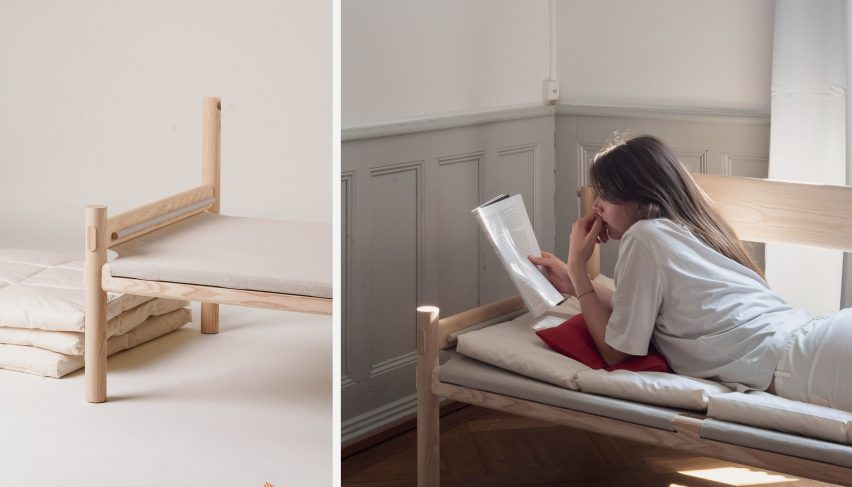
The Mo Circular Sofa by Jeanne Blatter
"The typology of the sofa is omnipresent, material-intensive and petroleum-based. Its design mirrors not only the idea of seating comfort but also a state of mental convenience – synthetic foam is comfortable, alternatives are uncomfortable.
"The Mo sofa strives for a formal lightness and represents circular design. A distinctive feature is its local and natural materials. As a durable alternative, its reduced construction eases repairs, re-covering and re-circulation.
"The upholstery is made of tufts of sheep's wool, while the Swiss pine is an interpretation of traditional cushioned compartments.
"The project focuses on SDG 12, 'responsible consumption and production'."
Student: Jeanne Blatter
Tutors: Monica Gaspar and Florian Hauswirth
Email: jeanne.blatter[at]gmail.com
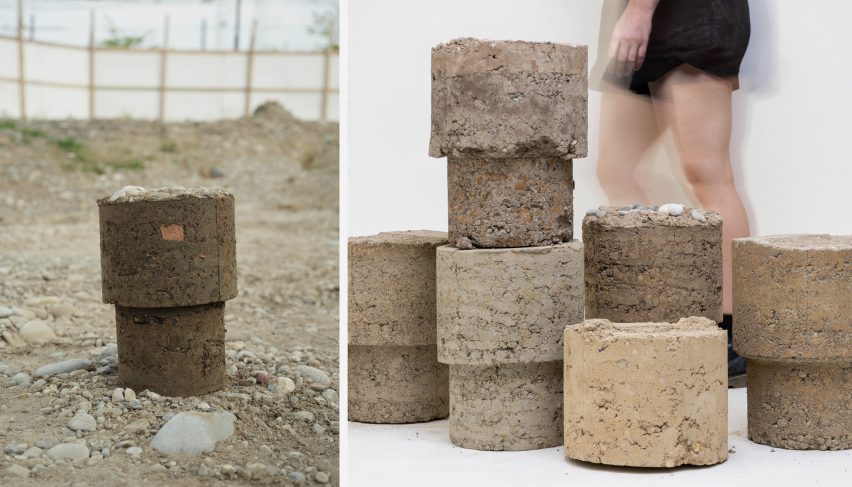
Typ A – An Exploration of Design Approaches to Excavation Material by Silvana Emmenegger
"Excavation material – produced in house and infrastructure construction – is the largest material flow in Switzerland at an annual rate of 40 to 60 million tonnes.
"A substantial part of it is today deposited. In her exploration of design approaches to this little-used material, Silvana Emmenegger created a series of stools made or rammed earth.
"The excavation material – a mixture of clay, gravel and sand – comes from various local building sites.
"Using a rammed-earth method, the stool becomes a stamp that absorbs the quality of the on-site ground into the object.
"The project focuses on SDG 12, 'responsible consumption and production'."
Student: Silvana Emmenegger
Tutors: Christof Sigerist and Mònica Gaspar
Email: emmeneggersilvana[at]gmail.com
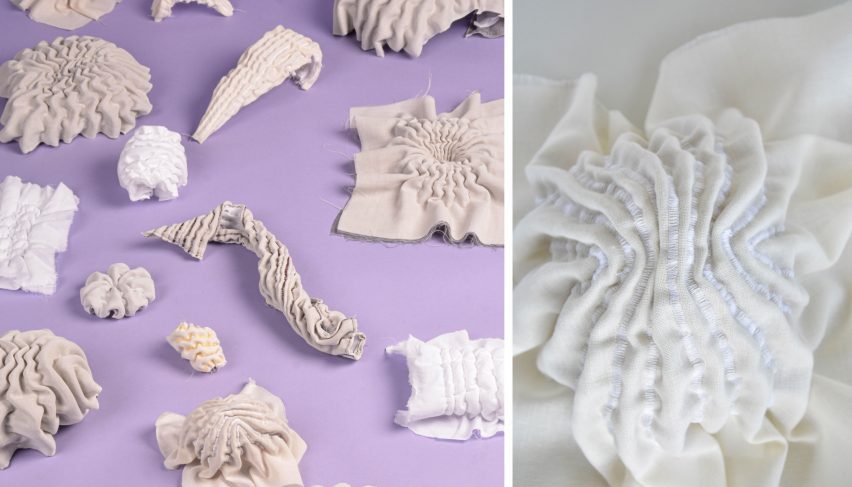
Layers Explorative Noise-Emission Research in the Textile Dimension by Blanca Frei
"Textile acoustic solutions are mostly two-dimensional, purely functionally designed objects.
"Layers redefines the boundaries of conventional acoustic textiles and provides an artistic three-dimensional solution to reducing noise pollution in semi-public spaces.
"In an analytical, iterative process and in cooperation with Création Baumann, Blanca Frei designed a multi-layered, absorbent textile.
"The self-contained method of producing 3D textiles transforms cast-off materials and contributes to the more resource-saving manufacture of acoustic textiles.
"The project focuses on SDG 12, 'responsible consumption and production'."
Student: Blanca Frei
Tutors: Thai Hua and Dr Dagmar Steffen
Email: blanca98.frei[at]hotmail.com
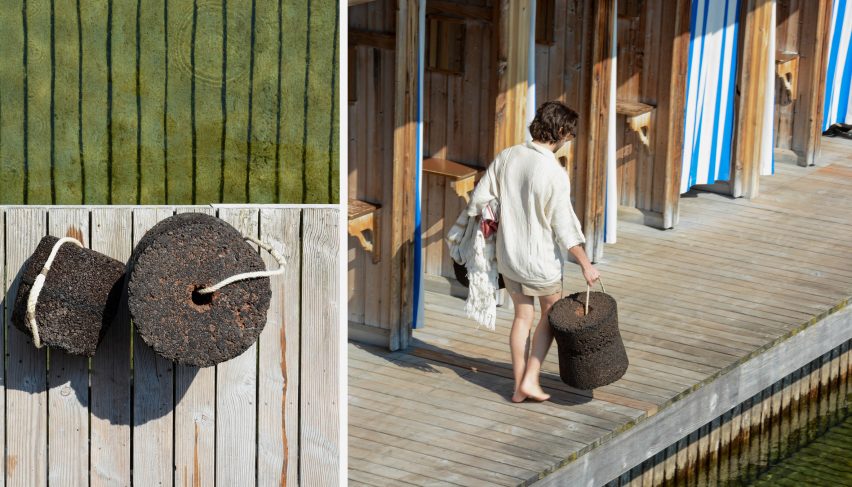
Backkork by Mario Gut
"Granulate cork is usually bonded with synthetic resin and processed using reductive finishing techniques, which produces cast-off material.
"By testing manufacturing techniques and mouldings, Mario Gut successfully achieves new ways to sustainably process cork as a material.
"The raw material is directly processed into its final form without adding synthetic resin, while also allowing for its plasticity.
"The multi-functionality of Backkork mirrors the transformability of the material with its diverse specific properties, both in water and on land.
"The project focuses on SDG 12, 'responsible consumption and production'."
Student: Mario Gut
Tutors: Florian Hauswirth and Dr Dagmar Steffen
Email: mail[at]mario-gut.ch
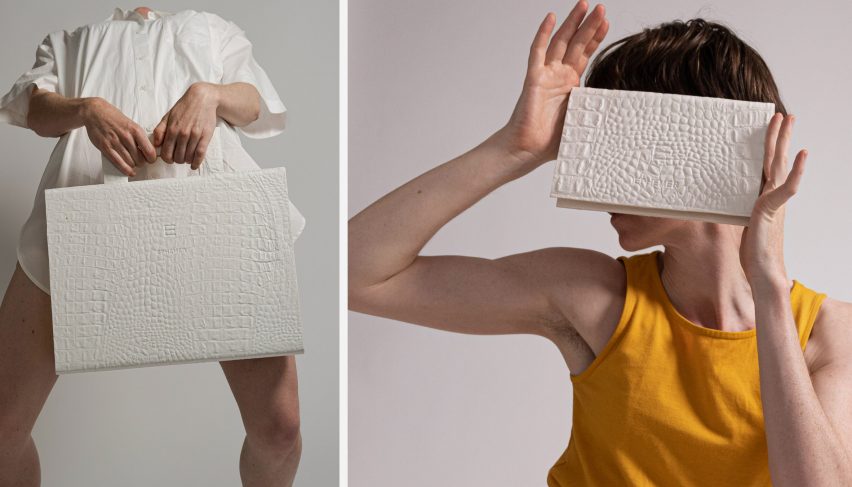
Ephemer by Stefan Hensel
"Consumer society is the result of a convoluted mix of wishes, needs and daily demands. It is part of our implanted culture, embedded in deeply anchored social, economic and political power structures.
"It is difficult to escape our habitual perspectives and to consider our everyday practices from a distance.
"Set against this background, Stefan Hensel steps outside the conventional remit of the industrial designer and uses the design and presentation of a paper-bag collection to draw attention to the invisible, ephemeral, aspects of our everyday actions.
"The project focuses on SDG 12, 'responsible consumption and production'."
Student: Stefan Hensel
Tutors: Mònica Gaspar and Florian Hauswirth
Email: stefan.hensel[at]kleinsinn.ch
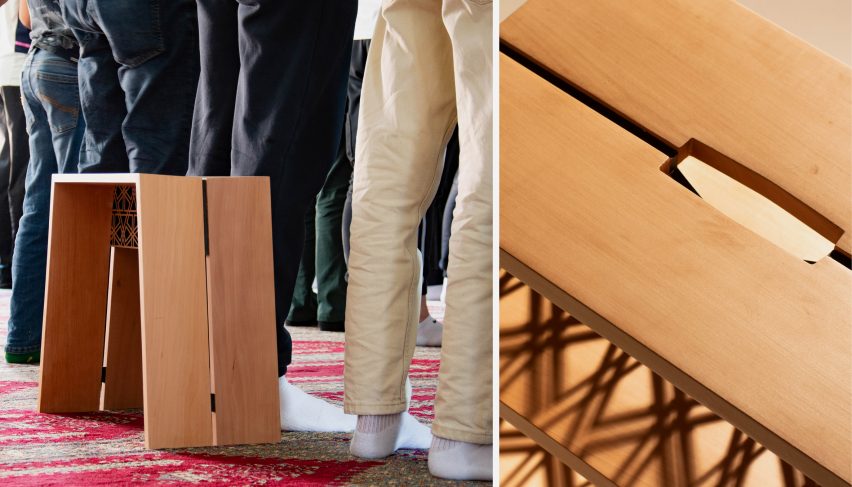
Elif by Ömer Karaman
"Praying five times a day is one of the five basic pillars in Islam.
"The Elif stool by Ömer Karaman is designed for people with physical impairments who are unable to lower themselves to the ground and who conduct their prayers sitting.
"The angled sitting surface and the corresponding height of the stool result in a comfortable seating position.
"The slender design of the stool enables the user to join the rows of prayer participants without creating a gap and without disturbing the spiritual atmosphere of the space.
"The project focuses on SDG 12, 'responsible consumption and production'."
Student: Ömer Karaman
Tutors: Andreas Saxer and Dr Dagmar Steffen
Email: o.karaman[at]gmx.ch
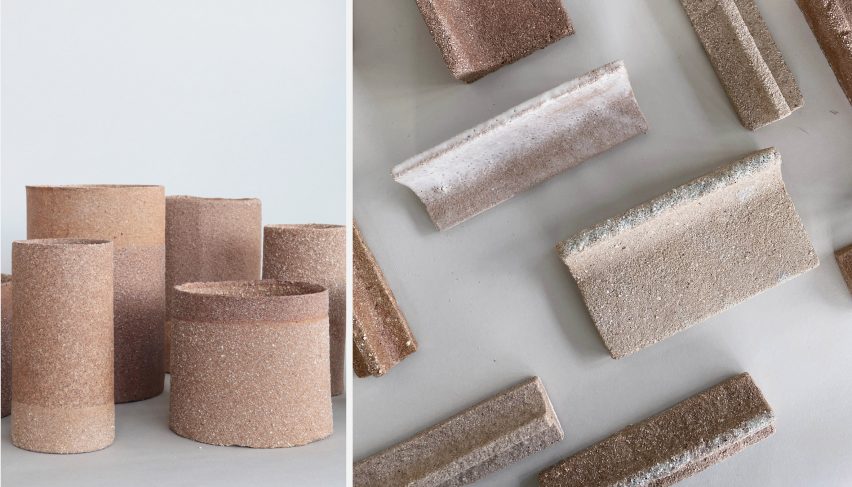
Vitreous by Patricia Kindler
"Ceramic is a non-renewable resource and its extraction and manufacture involve large amounts of energy. Nonetheless, the current practice is to dispose of it as building debris or to down-cycle it.
"The idea behind the project is to reuse sanitary ceramic as a valuable raw material.
"Involving materials research, Patricia Kindler examines the potential of this high-quality material and fully exploits the scope for colour, structure and form to their maximums.
"With fire and an amalgamation with waste glass, the ceramic melts to become a recyclable material. The end result is various showcase objects that outline a range of possible usable forms.
"The project focuses on SDG 12, 'responsible consumption and production'."
Student: Patricia Kindler
Tutors: Christof Sigerist, Cornelia Gassler and Dr Dagmar Steffen
Email: studio.patricia.kindler[at]gmail.com
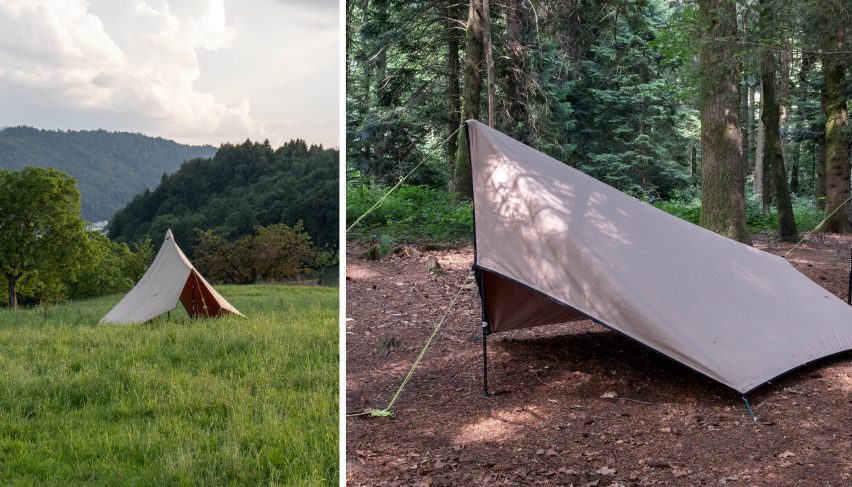
Lynx by Dominic Krucker
"Considering the growing interest in outdoor sports, it would seem to be vital to also promote the use of sustainable and robust materials within the sector.
"The project involves the development of a shelter system that combines the advantages of a conventional trekking tent with the sustainable characteristics of a tent made of natural materials.
"Dominic Krucker concentrates on a long-lasting construction that is easy to repair.
"The system involves multi-functional uses for one to two people and the possibility to expand it modularly for various-sized groups.
"The project focuses on SDG 12, 'responsible consumption and production'."
Student: Dominic Krucker
Tutors: Christof Sigerist and Dr Dagmar Steffen
Email: dominic.krucker[at]outlook.com
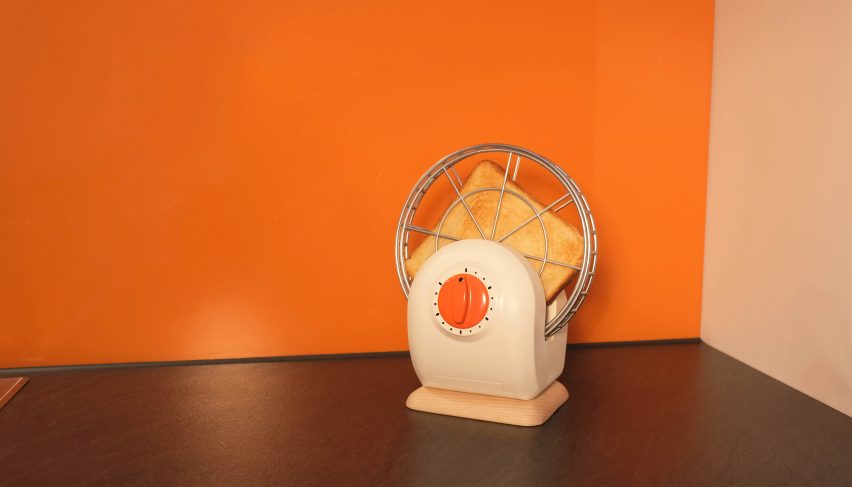
Desaign Process by Juri Liechti
"Artificial intelligence (AI) is the latest buzzword. Its potential applications and impacts are being widely and controversially debated.
"The new possible applications have meant that many of the discussions revolve around the role of creativity. Juri Liechti incorporates publicly available AI into the design process.
"Using the development of a toaster, he endeavours to familiarise himself with AI as a partner while testing if and how the joint cooperation works.
"The goal is to explore the possibilities and the limitations, and to assess the impact on product design work.
"The project focuses on SDG 4, 'quality education', and SDG 9, 'industry, innovation and infrastructure'."
Student: Juri Liechti
Tutors: Andreas Saxer and Dr Dagmar Steffen
Email: juriliechti[at]gmail.com
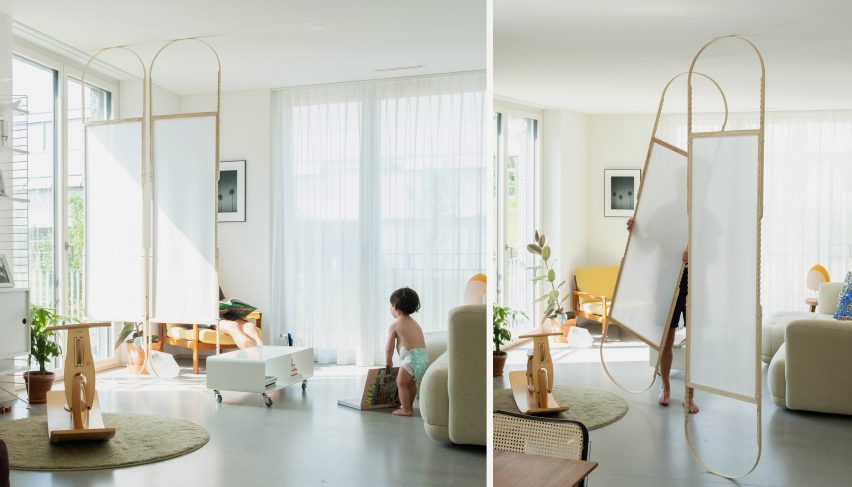
VNC | Visual Noise Cancelling by Nils Rolli
"The project tackles visual and sporadic intimacy in shared living spaces. The room-divider allows a space to be flexibly zoned for work and living according to needs.
"The core of the minimised design is a textile and translucent surface, which produces an in-front and a behind without robbing the room of daylight.
"Inspired by adjustable furniture, the object can be configured to fit the desired room height and is spanned between the ceiling and the floor.
"VNC was realised using digital design and production tools, characteristics that make it both globally and regionally manufacturable.
"The project focuses on SDG 12, 'responsible consumption and production'."
Student: Nils Rolli
Tutors: Mònica Gaspar and Christof Sigerist
Email: nils.rolli[at]hotmail.com
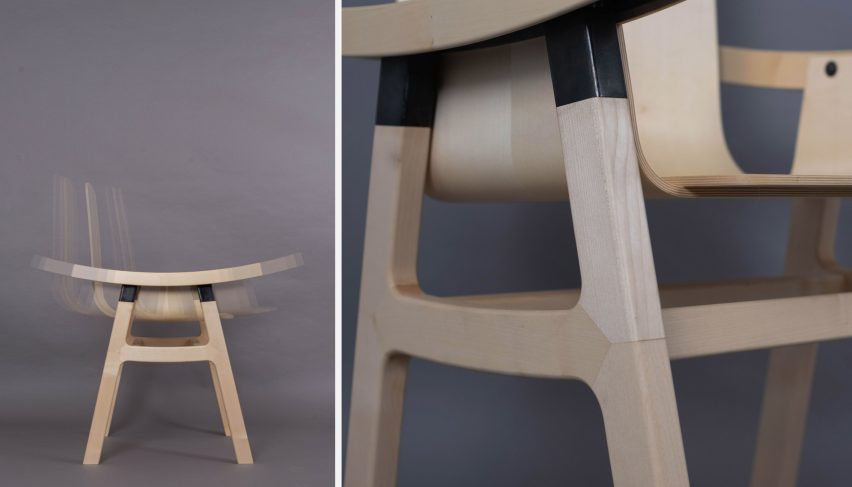
Part-time Free Time by Men Schmidt
"The chair is a companion on the path to inner renewal and personal development.
"It invites you to interrupt your workflow for a moment or two and to immerse yourself in the world of reflection and inspiration – a place to pause that allows you to enjoy a brief time to contemplate and regenerate during your work.
"It is a unique experience, in which your mind floats in a harmonious balance between work and meditation. The chair becomes a tool to release your own creativity and to discover the potential of your own thinking.
"The project focuses on SDG 3, 'good health and well-being'."
Student: Men Schmidt
Tutors: Andreas Saxer and Mònica Gaspar
Email: info[at]menschmidt.ch
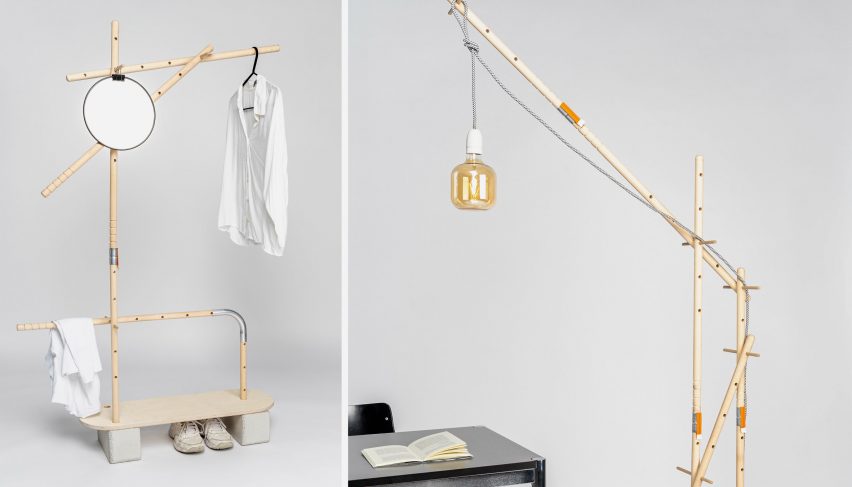
Oto by Gian-Andrea Sgier
"This is informed by the classic feature of any student flat – shelving made of bricks and planks. Derived from this approach, the system evolved from a set of DIY-store elements.
"Rough and yet refined with precise interventions – functional, tactile and aesthetic – the set stimulates the user to experiment and individualise.
"Oto is a critique of currently available rigid domestic furniture with its fixed singular function.
"The result is a series of objects that oscillate between furniture and object, and which, with their museum-like character, excite people to ponder their own requirements and to question traditional forms of use."
"The project focuses on SDG 12, 'responsible consumption and production'."
Student: Gian-Andrea Sgier
Tutors: Thai Hua and Dr Dagmar Steffen
Email: gian_sgier[at]hotmail.com
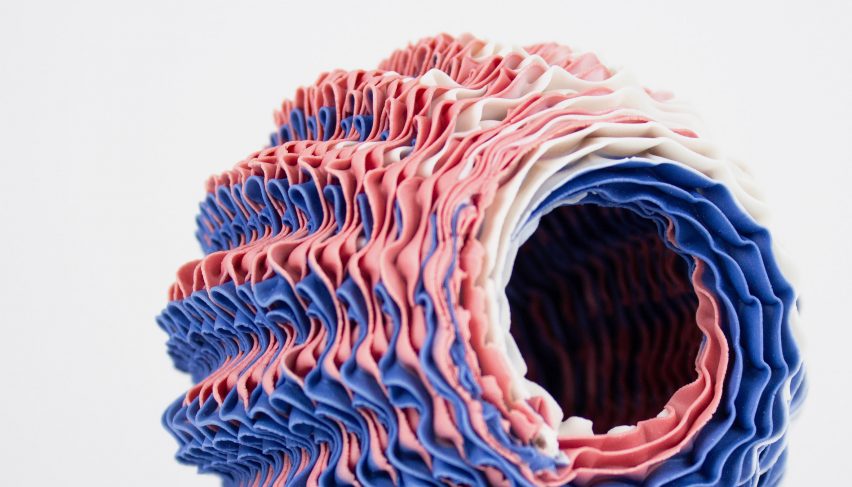
Digitalised Pastry by Moana Sofia Sidoti
"Weighing, mixing, colouring, kneading, extruding, glazing, sliding into the oven – the procedures and equipment in pastry making are in many ways similar to those in ceramic making.
"The Digitalised Pastry project involves digitalising the manual techniques, processes and aesthetics from the world of puddings and translating them into porcelain.
"To do this, Moana Sofia Sidoti developed tools with multi-chamber systems and nozzles for ceramic printing machines.
"The innumerable production possibilities that emerge in the field or ceramic printing open up new horizons for the creative design of objects.
"The project focuses on SDG 12, 'responsible consumption and production'."
Student: Moana Sofia Sidoti
Tutors: Thai Hua and Mònica Gaspar
Email: mo.sidoti[at]gmx.ch
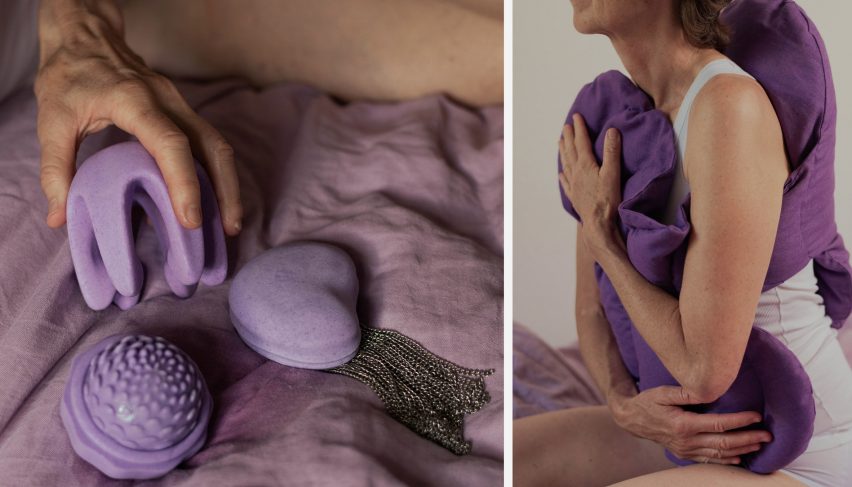
Nana – Erotic Accessories for Women (Binary and Non-Binary) of the Sexual Revolution by Sofie Zellweger
"Our society is reluctant to talk about the sexual desires and fulfilling the needs of older women (bi and nbi).
"For many people it is obviously a taboo. Despite the huge shifts in bi and nbi women's roles in western society, the ways in which they are expected to indulge, express or behave themselves are still clouded by a profound stigma and obsolete opinions, particularly concerning their sexuality.
"Sofie Zellweger's work showcases this taboo. The erotic accessories focus on sensual and tender feeling of touch, and are an invitation to discover something new.
"The project focuses on SDG 3, 'good health and well-being', and SDG 5, 'gender quality'."
Student: Sofie Zellweger
Tutors: Andreas Saxer and Mònica Gaspar
Email: sofie.zellweger[at]outlook.com
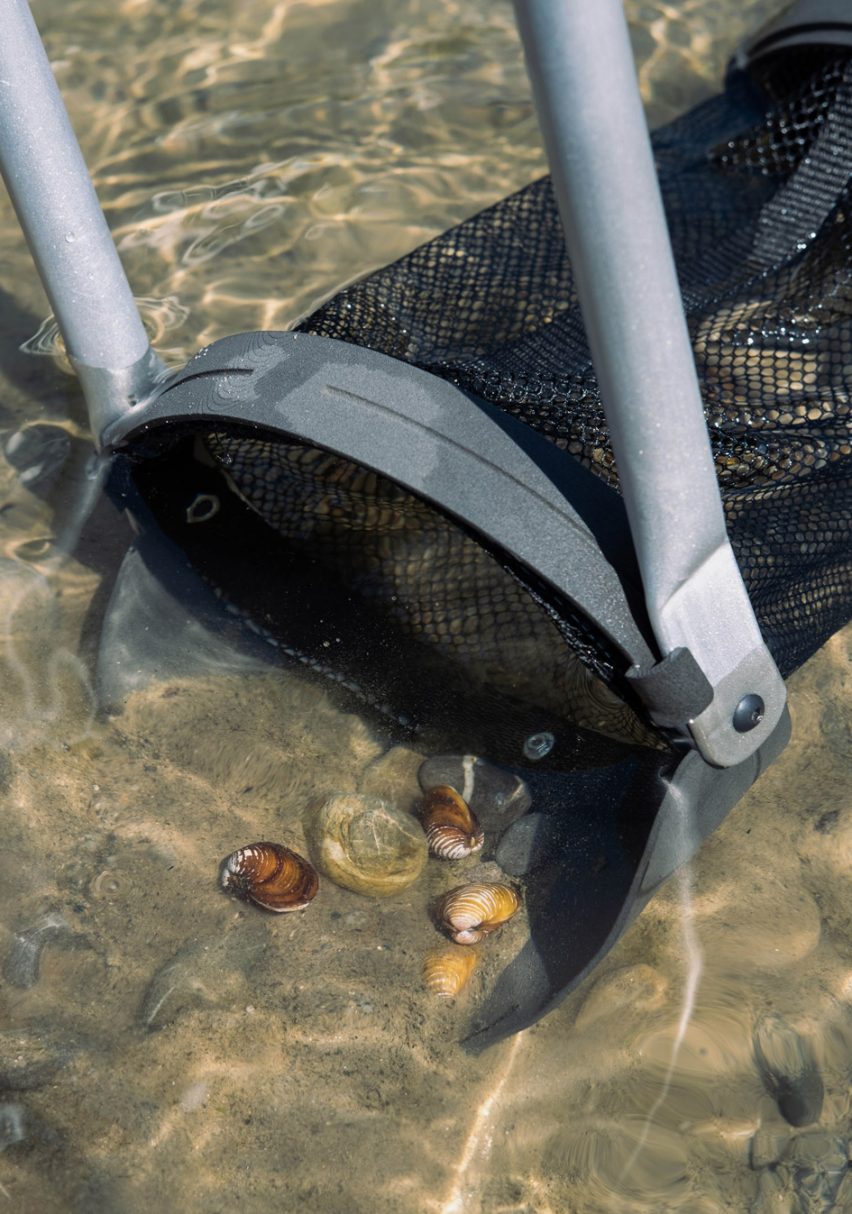
Nautilus by Léon Bolz
"Worldwide sinking biodiversity represents one of the greatest ecological challenges of the coming decades and has an impact on the climate and the sustainable basis of our lives.
"Invasive species, such as plants, fungi or animals introduced by humans drive out other species and take over their living spaces.
"Some of them could be used as foodstuffs, for instance the Asian clam, which is currently one of the most widespread invasive aquatic species on the planet.
"Léon Bolz has created Nautilus as a new product category, a cross between a spade and a landing net. The object simplifies the collection of the invasive mussels and makes them accessible as food for private consumption.
"The project focuses on SDG 12, 'responsible consumption and production'."
Student: Léon Bolz
Tutors: Mònica Gaspar and Thai Hua
Email: leon_bolz[at]outlook.com
Partnership content
This school show is a partnership between Dezeen and Lucerne University of Applied Sciences and Arts. Find out more about Dezeen partnership content here.